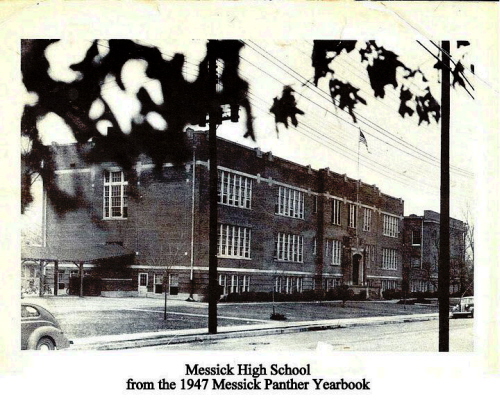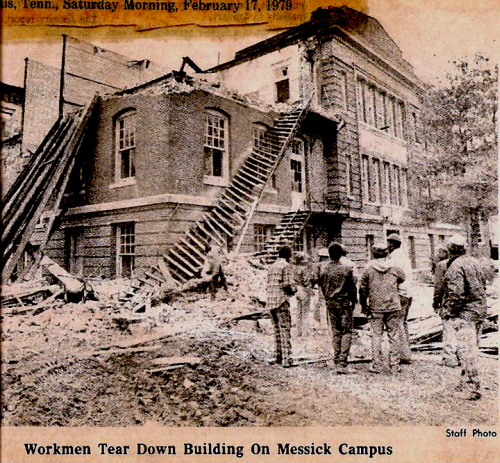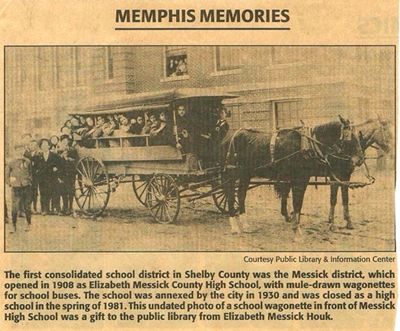Drop Down Menu
History of Messick
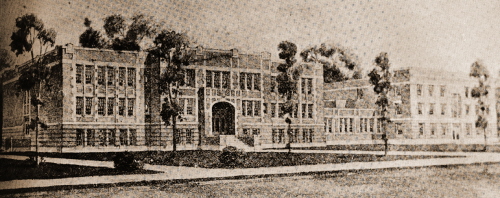
Teddy Roosevelt was President, the War Between the States (NOT yet
generally called the Civil War in Memphis at that time!) was very
much still a living memory, and E. H. Crump ruled Memphis and much
of Tennessee with a benevolent but iron hand... and Messick opened
its doors.
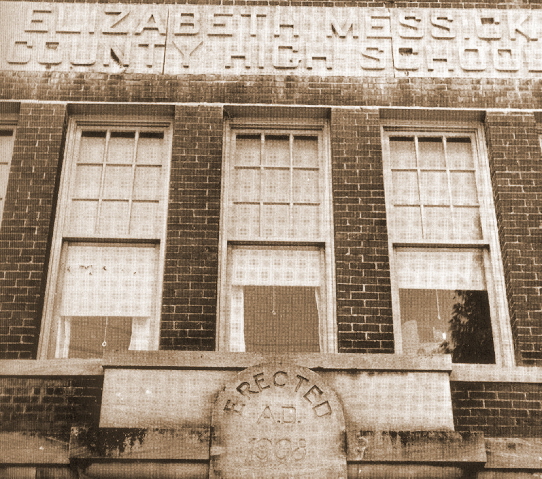
Messick's 73 years of existence encompass and influence much of
Memphis' 20th century history. The class of 1969 was Messick's
50th class of high school graduates; little did we dream that
there would only be twelve more.
For 51 years - from the beginning of the Great Depression until
the election of Ronald Reagan as President - Messick was the
oldest high school in Memphis (though not the "oldest city
school"; Central opened in 1912, Messick did not come into the
city system until 1930.)
Messick started as a Shelby County school. Located in what was
then called Buntyn, Tennessee, the elementary building was erected
in 1908 to consolidate the elementary schools of Buntyn, Fleece
Station, and Avalon. It very probably was the first consolidated
school in the Southeastern United States.
The new school was named for Miss Elizabeth Messick, then Shelby
County Superintendent of Schools. Miss Messick was severly
criticized for spending $30,000 for a building which could "never
be filled"! (In 1969, the school was full almost to bursting, and
the most recent building project, a new gym, had cost $300,000.)
While Miss Messick never had anything directly to do with Messick
beyond its building, she went on to quite a career after her
marriage (after which she was known as Elizabeth Messick Houck).
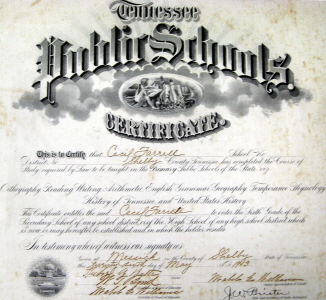
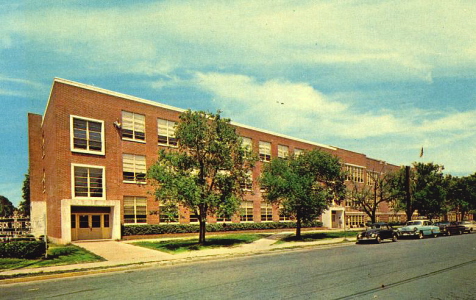
The well-stocked library we used in our Messick days, so well
administered by Mrs. Moreno, had humble beginnings. Three hundred
books were bought by the county school board, put in 30 lockboxes
(10 books per box), and were shared by ALL the schools. A box
could stay at each school for one month.
Study hall and the school offices were first located on the third
floor of the elementary building.
In our day Messick was not only a full and bustling high school
but was known as one of the best public schools around anywhere in
the country. In fact "our" Messick boasted not only the teacher
chosen by Yale University as the best high school teacher in
America - the unforgettable Alice B. Rogers - but also a future
Tennessee Commissioner of Education, Ada Jane Walters. The quality
of education we were given was the best public education available
in the country.
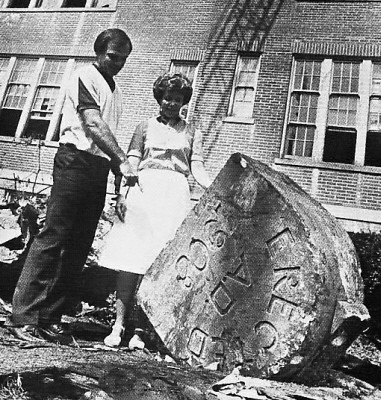
We were one of the last classes to enjoy Messick at its greatest.
In the 1970's the neighborhood and the school began to decline.
Messick's last graduating class was th class of 1981, and the main
building was demolished in 1982. An Adult Education Center now
occupies the remaining buildings.






